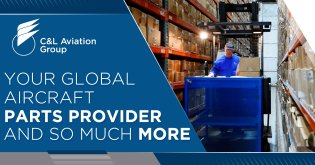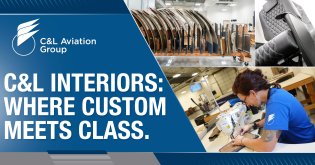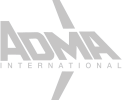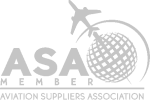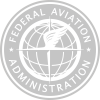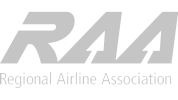
Comparing aircraft parts quotes can be incredibly frustrating and time consuming. Not all aircraft part quotes look the same or prioritize the same information – but you still need to compare quotes anyway.
We get it.
Each year, we buy and sell thousands of aircraft parts, and we deal with quotes daily. We know that you need to be able to identify key components of the quote to make quick, informed decisions.
In this guide, we show you how to understand any aviation parts quote.
What are the Different Types of Aircraft Parts Quotes?
In aviation, there are two ways you can purchase aircraft parts: outright and exchange.
With an outright purchase, replacement aircraft parts will be purchased outright at their full market value.
In an exchange, the existing part that has been removed from the aircraft (known as a core) is exchanged for a replacement aircraft part. The new aircraft part should be serviceable and ready for installation. An exchange fee is charged for the convenience of getting a part immediately and not having to wait for your part to be repaired. You will also be charged for the cost of repairing the core once the part has been evaluated by the supplier’s repair shop.
The components of an aircraft parts quote (described below) will be included regardless of whether the quote is for outright or exchange.
What are Aircraft Part Numbers?
Part numbers (PN) are unique alphanumeric identifiers for each aircraft part, and they should always be included in a quote. The order of the letters, numbers, dashes, and slashes within the part number is very specific. For example, a 21117-1 pressure screw is different from a 211-171 valve plate.
Aircraft parts numbers are issued by individual manufacturers. It is possible (and does happen) for two very different aircraft parts to be identified by the same part number. There are a couple of ways to confirm whether you are being quoted for the correct part. First, you can check the description of the part shown in the quote (see below). Second, you may request – or the quote may include – a photo of the part so you can compare to the replacement part.
It’s important to double-check the aircraft part’s number on your quote to ensure you will not be charged for an incorrect item.
What are Alternate Aircraft Part Numbers?
Alternate parts numbers may be offered in response to a request for a quote. It is up to the operator to decide if the alternate part number can be accepted. The Illustrated Part Catalogue (IPC) – an aircraft parts database – may be consulted to determine if a part can be installed on a particular aircraft or engine.
You may also be offered a PMA part as an alternate. Again, it will be up to each individual operator to decide if the part can be accepted.
What is the Part’s Description?
The part’s description (a.k.a. nomenclature) provides the name of the part, such as “flutter damper” or “landing gear actuator.”
The description is also assigned by the manufacturer. In most cases, manufacturers will use similar descriptions. Although some may vary, the descriptions should have the same meaning. For example, “O-rings” and “packings” may be used to describe the same item.
What is the Lead Time or Delivery for an Aircraft Parts Sale?
Every quote should include a delivery time or lead time (the amount of time from when the order is received and when the part is shipped). If a company has the part in stock, the delivery time should state “stock.” In this case, the aircraft part should be able to be shipped the same day or the next day at the latest.
Other Delivery Dates:
- 1-2 Days – This likely means the supplier does not have the part in stock but is purchasing the part from another supplier to fill your request.
- 7-14 Days – The part may be out for repair and the supplier is waiting for the part to come back into their warehouse.
- 30 Days – This likely means the supplier has the part in stock or is able to obtain the part, but the part needs to go out for repair before shipping.
The delivery details should also include shipping terms. In most cases, these will be FCA (Incoterm®) and the name of the place where the part is being delivered. This destination is typically the warehouse of the supplier where the part is located.
Once the buyer’s freight company picks up the part from the supplier’s warehouse, the part becomes the responsibility of the buyer. This means that the buyer is responsible for the part if it is damaged or lost during transit.
Related Reading: What You Need to Know About Shipping Aircraft Parts
What is the Part’s Certification or Documentation?
The certification or documentation for a part should be a release to service issued by an organization that is authorized to issue an 8130 or Form One (or similar). Overhauled or repaired parts will require a release to service (most of the time) before being installed on an aircraft or engine. Depending on the part, new parts may come with just a Certificate of Conformance; this should be acceptable to most aircraft operators.
The certification may be issued by the original manufacturer or repair vendor.
The part’s certification should contain the following information:
- Aircraft part number
- Part description
- Part condition
- Quantity
- Name of who issued the certification
- The date the certificate was produced
- Time and cycles on the part (if the part has a limit on its allowable life)
What is Aircraft Part Traceability?
The history of the aircraft part may need to be traced back to the last operator and/or the manufacturer. This can be a regulatory requirement or an operator requirement.
If a part needs to be traced back to the last operator, documentation will need to show the transfer of ownership from one owner to the next via an ATA106, invoice, packing list, or other document that clearly shows the direct link between owners.
This same type of documentation is required if a part needs to show history back to the date of the manufacture. “Back to birth trace” (as it is referred to in the industry) is required for life-limited aircraft parts as well as parts for large engines.
What are the Different Part Conditions?
The condition of the part (usually abbreviated as CD on the quote) informs buyers of the part’s current state, whether it be new, used, repaired, or overhauled. Aircraft part conditions generally inform the price of the part. These conditions and their abbreviations are described below:
- New (NE) – a part that has no operating time or cycles and has not previously been installed on an aircraft. It retains its OEM certificate and all necessary trace information.
- Factory New (FN) – a part that has gone from the Original Equipment Manufacturer (OEM) to the end user. The part is new and has no operating time or cycles.
- New Surplus (NS) – a part that is new and has no operating time or cycles. It does not have the original certification from the OEM, but may include a certification of conformance and trace documentation from the seller.
- Overhaul (OH) – a part that has been refurbished in accordance with appropriate aviation standards, such as the Component Maintenance Manual (CMM).
- Repaired (RE/REP) – a part that was previously broken or faulty and has been fixed in accordance with airworthiness standards.
- Serviceable (SV) – a part has either been tested or visually inspected and deemed operable. Sometimes repaired parts are listed as serviceable.
- As Removed (AR) – a part that is in the same condition as it was when removed from the aircraft. A part in AR condition may be operable, in need of repair, or is beyond economical repair (BER).
For a full list of aircraft part conditions, check out our article: “What are the Different Aircraft Part Conditions?”
What is the Part’s Warranty?
Each part listed on the quote should have its own warranty. The length of a warranty will vary based on the part’s condition as well as whether it is being offered by the original manufacturer, reseller, or repair vendor. Some vendors may not offer any warranty or only offer a very limited warranty – be aware of this.
Our Advice: Always Ask Questions
Most of the information outlined above will be included on your quote, but not always.
If you need additional information to make your decision, contact the aircraft parts supplier. It is considered best practice to ask for copies of certificates and photos of the part to confirm you are purchasing the correct part you need.
10 Things to Watch Out For
- Alternate aircraft parts offered – is this part acceptable to the aircraft operator?
- Aircraft parts offered without warranty
- Aircraft parts with correct part numbers but different descriptions
- Aircraft parts without appropriate certification
- Incomplete traceability
- Forgery of documentation (Always buy from a reputable source)
- Parts with a very old certification
- Vendors asking for payment up front without confirmation that they have the correct part in stock
- Parts that have been submitted to a functional test versus parts that have had a deep-level repair, particularly parts which state “removed serviceable” on the release certification
- Exchange quotes with excessively high “core value”

